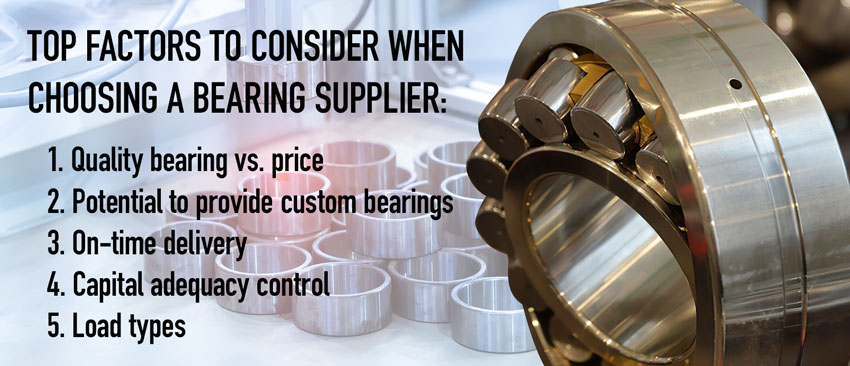Things about Volution Bearing
Not known Details About Volution Bearing
Table of ContentsHow Volution Bearing can Save You Time, Stress, and Money.The smart Trick of Volution Bearing That Nobody is Talking AboutVolution Bearing - QuestionsSome Known Details About Volution Bearing
An axial (or thrust) bearing tons is when force is identical to the axis of the shaft. A radial bearing load is when pressure is vertical to the shaft.Below is a quick referral for the type of birthing tons and the best sphere bearing for the job: Radial (vertical to the shaft) and light tons: Choose radial sphere bearings (likewise known as deep groove ball bearings). Radial bearings are a few of the most usual kinds of bearings on the market.
Roller bearings are developed with round rollers that can disperse tons over a larger surface location than ball bearings. Below is a fast recommendation for the type of birthing load and the ideal roller bearing for the task: Radial (perpendicular to the shaft) tons: Pick common round roller bearings Axial (thrust) (parallel to the shaft) loads: Choose round drive bearings Incorporated, both radial and axial, lots: Select a taper roller bearing The rotational rate of your application is the next variable to look at when picking a bearing.
They execute much better at higher speeds and offer a greater speed range than roller bearings. One factor is that the call in between the rolling aspect and the raceways in a ball bearing is a factor instead of a line of contact, like in roller bearings. Since rolling elements press right into the raceway as they roll over the surface area, there is a lot less surface contortion taking place in the factor lots from sphere bearings.
The smart Trick of Volution Bearing That Nobody is Discussing

If this happens, a straightforward and usual solution is to change the sphere bearing product from steel to ceramic. This maintains the bearing dimension the additional hints very same however uses roughly a 25% higher rate rating. Since ceramic material is lighter than steel, ceramic rounds create less centrifugal pressure for any kind of given speed.
One factor is that the rounds are smaller and smaller sized rounds consider much less and generate less centrifugal force when revolving. Angular contact bearings additionally have a built-in preload on the bearings which deals with centrifugal forces to appropriately roll the spheres in the bearing. If you are developing a high-speed application, then you'll want a high-precision bearing, typically within the ABEC 7 precision course.
Volution Bearing Fundamentals Explained
High precision bearings are reputable for applications that go fast due to the fact that they make sure excellent ball and raceway interaction.
Some applications, like reducing device pins, will just allow a tiny discrepancy to take place on its rotating elements. If you are crafting an application such as this, after that choose a high precision bearing due to the fact that it will generate smaller system runouts as a result of the limited tolerances the bearing was made to. Birthing rigidness is the resistance to the force that triggers the shaft to depart from its axis and plays an essential duty in reducing shaft runout.

When the angular call bearings are mounted, the offset is removed which triggers the spheres to press right into the raceway with no outside application force. This is called preloading and the process boosts birthing strength also prior to the bearing sees any kind of application pressures. Recognizing your bearing lubrication demands is necessary for picking the ideal bearings and requires to be taken into consideration early in an application style.
Unknown Facts About Volution Bearing
Lubrication creates a film of oil in between the rolling component and the bearing raceway that aids protect against rubbing and overheating. The most common kind of lubrication is grease, which contains an oil with a thickening agent. The thickening agent keeps the oil in position, so it won't leave the bearing.
After the rolling aspect passes by, the oil and thickening agent join back together. For high-speed applications, recognizing the rate at which the oil and thickener can separate and rejoin is crucial. This is called the application or bearing n * dm worth. Before you pick an oil, you need to find your applications ndm value.
Compare your ndm worth to the grease's max rate worth, situated on the datasheet. If your n * dm worth is more than the grease max speed worth on the datasheet, then the oil won't have the ability to give adequate lubrication and early failure will happen. Another lubrication alternative for high-speed applications are oil mist systems which blend oil with compressed air and after that infuse it into the bearing raceway at metered periods.